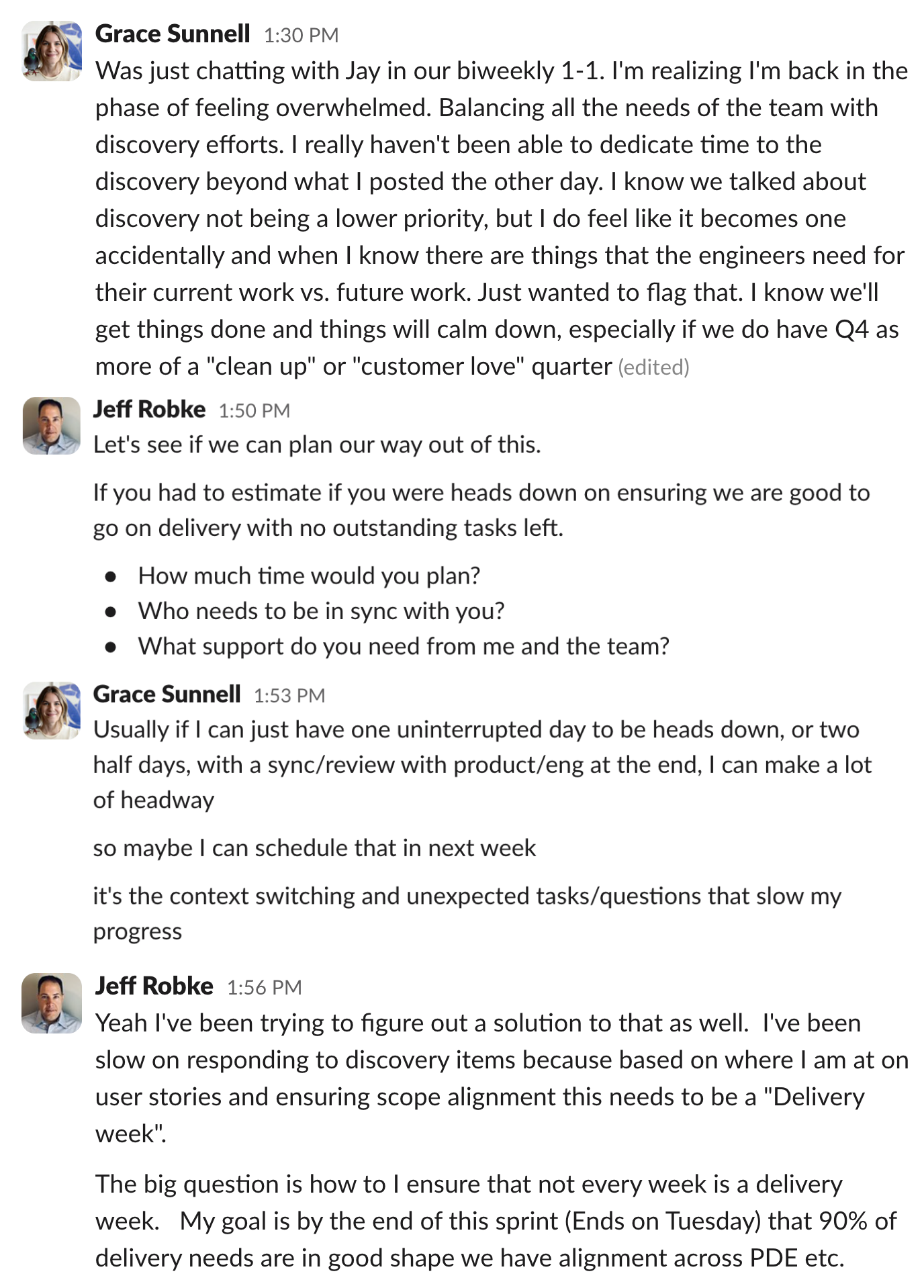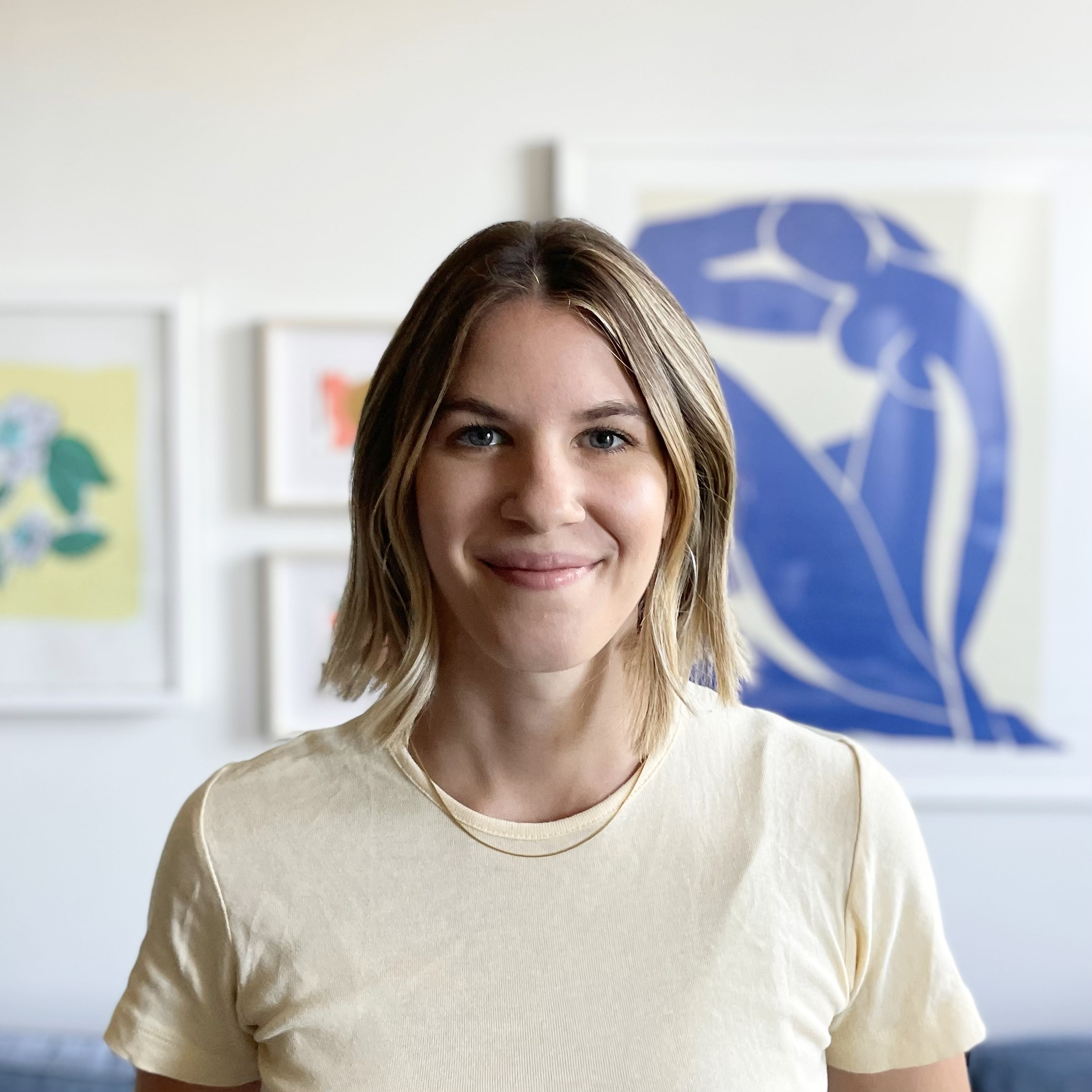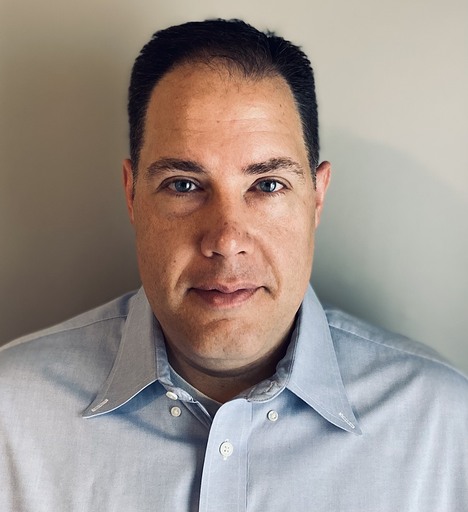Grace Sunnell is a Lead Product Designer formally for Slack Connect and now evolving the experience of Slack AI.
Jeff Robke is a Senior Product Manager focused on Slack Connect for Enterprise customers.
Think of a time at work where things felt effortless. You felt like you could do anything, climb over any obstacle. Now, think of a time where every step was like walking through deep snow. What was the difference?
We’re Grace and Jeff, and, in our experience working as cross-functional partners in Product Design and Product Management, it has a lot to do with people. Your partners, your team and how you work have a huge impact on what you can accomplish. And in a time where switching teams, companies, and cultures has become a normal part of the modern work experience, these core relationships are more important than ever.
Working together on the Network pillar (which owns Slack Connect and ensures our customers can collaborate with other companies in Slack), our task was to significantly grow Slack Connect in the Enterprise. As new teammates with big opportunities on the line, this became the perfect moment to build a foundational relationship to ensure we could deliver. Here’s how we did it:
Tip #1: Prioritize building relationships with your peers
Grace: Like most people, and especially in my career before Slack, I’ve worked with cross-functional partners I loved and some I didn’t. What made the difference were those who made it clear from the beginning that building a relationship with me was a priority. Jeff was the one to reach out first, and it was a breath of fresh air to learn he and I were on the same page.

As someone who was still in the midst of finding my groove at Slack and determined to start off on the right foot on this new team, I really appreciated this message. First impressions go a long way, and this simple gesture made me feel like a valued member of the team before we even started the project. Plus, “how we like to work” reminded me that I’d created a Personal Operating Manual, a tool I’ve used at previous companies to set expectations with coworkers, but hadn’t shared it with my teams at Slack. I sent it to the full team so they could see how I work best.
Tip #2: Set expectations on how you want to work
Jeff: Grace sharing her personal operating manual expedited our relationship-building because it removed a lot of the guesswork. Here are a few entries that changed how I started working with Grace:
Work Style
I’m most productive from 10am to 2pm.
This informed my planning for when to collaborate.
What I value
Being a true partner — dividing and conquering responsibilities equally, being hands-on and in the weeds together as needed.
This opened the door to looking across PM and Design responsibilities and erasing the preconceived lines.
How to help me
Give me clear due dates and timelines! My brain works in schedules.
Over time, I’d been conditioned to not give due dates through various planning strategies. This clear message changed my approach when working with Grace.
What I don’t have patience for
Unapologetic unresponsiveness. Everyone is busy but since I am very action-oriented, I get impatient when I’m not getting a response from someone with no context for why.
I think this one sentence exemplifies our partnership. Communicating when you are blocked or struggling to respond is the ultimate kindness.
Tip #3: Trust each other/be willing to try what the other person has had success in
Grace: A few months after I joined the team, the Network pillar planned an in-person onsite in San Francisco. With both a new quarter and a whole new strategy kicking off, it felt like the perfect opportunity to motivate the team on what was to come next and create alignment.
With my experience in strategy/roadmap kick-offs from my time at an agency, it felt important to create something that illustrated to the team how far we’ve come, where we were going, and how it would happen. Leveraging Jeff’s foundational work and my deck-making skills, we put together a kick-off presentation to set the scene for the rest of the quarter.

We learned through this process that we sometimes needed to take turns taking the pen. For example, we knew the way we presented our long-term strategy needed to be exactly right to get buy-in from leadership. We thought about the work very differently, so we took turns putting our ideas in FigJam. Taking turns like this advances an idea forward, as it really helps when hitting an obstacle or mental block. Simply tag your teammate in and see where you end up together.

Tip #4: Be flexible and adaptive: check in frequently & reset
Jeff: Our strategy for balancing delivery and discovery was to carve out time specifically for focusing and for collaboration. We used the team’s existing meetings to assess our process, the priorities for that week, and set expectations. During weeks when there were a lot of open questions with engineers on the work currently in development, we’d make sure they had our full attention. On weeks when things were slower, we’d tell the team we’re going into “focus mode” and might be slower to respond. Ultimately, Monday through Wednesday became designated time to support engineers, while Thursday and Friday were focus days for exploration and thought work.
Even as we took it week by week, there were moments where it felt like we were taking on too much at once or it wasn’t clear what the priority was.

Strong partnerships yield strong results
The true markers of our partnership’s success? At the end of the quarter, we delivered a large financial impact and built strong momentum for Slack Connect usage by our enterprise customers. We had defined not one but two different long-term strategy directions to be pitched to leadership that would create our roadmap for the next 1-2 years. Without each other, we simply wouldn’t have been able to accomplish this much.
Months later–-and even while collaborating to write this–-we’ve used all of the tips mentioned in this article. We wrote out things separately then met in the middle to discuss how to move forward. Just like the presentation in San Francisco, writing this together was a great way to align and make sure we’re telling the same story as a team.

